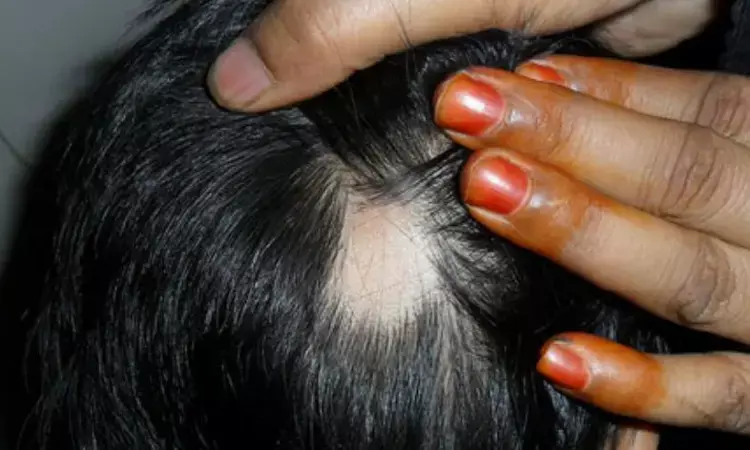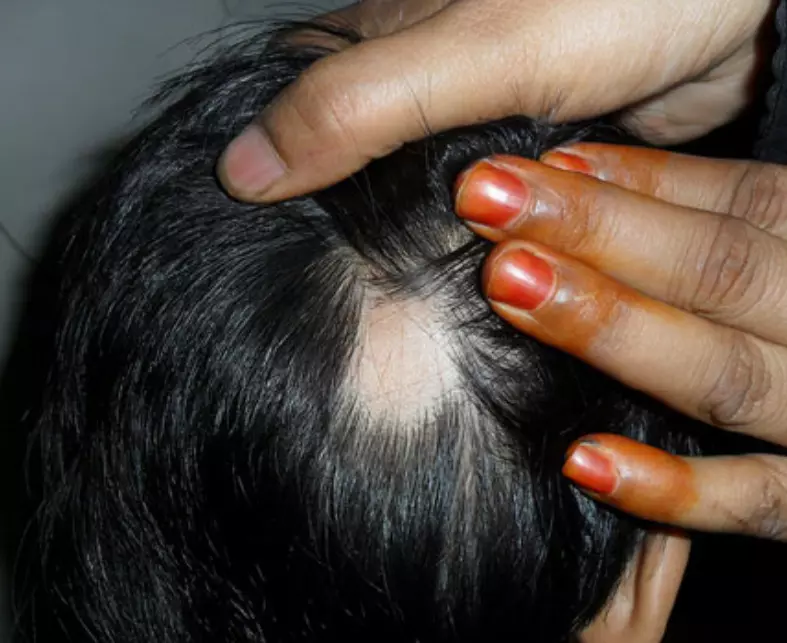- Home
- Medical news & Guidelines
- Anesthesiology
- Cardiology and CTVS
- Critical Care
- Dentistry
- Dermatology
- Diabetes and Endocrinology
- ENT
- Gastroenterology
- Medicine
- Nephrology
- Neurology
- Obstretics-Gynaecology
- Oncology
- Ophthalmology
- Orthopaedics
- Pediatrics-Neonatology
- Psychiatry
- Pulmonology
- Radiology
- Surgery
- Urology
- Laboratory Medicine
- Diet
- Nursing
- Paramedical
- Physiotherapy
- Health news
- Fact Check
- Bone Health Fact Check
- Brain Health Fact Check
- Cancer Related Fact Check
- Child Care Fact Check
- Dental and oral health fact check
- Diabetes and metabolic health fact check
- Diet and Nutrition Fact Check
- Eye and ENT Care Fact Check
- Fitness fact check
- Gut health fact check
- Heart health fact check
- Kidney health fact check
- Medical education fact check
- Men's health fact check
- Respiratory fact check
- Skin and hair care fact check
- Vaccine and Immunization fact check
- Women's health fact check
- AYUSH
- State News
- Andaman and Nicobar Islands
- Andhra Pradesh
- Arunachal Pradesh
- Assam
- Bihar
- Chandigarh
- Chattisgarh
- Dadra and Nagar Haveli
- Daman and Diu
- Delhi
- Goa
- Gujarat
- Haryana
- Himachal Pradesh
- Jammu & Kashmir
- Jharkhand
- Karnataka
- Kerala
- Ladakh
- Lakshadweep
- Madhya Pradesh
- Maharashtra
- Manipur
- Meghalaya
- Mizoram
- Nagaland
- Odisha
- Puducherry
- Punjab
- Rajasthan
- Sikkim
- Tamil Nadu
- Telangana
- Tripura
- Uttar Pradesh
- Uttrakhand
- West Bengal
- Medical Education
- Industry
Topical latanoprost safer than topical steroids in treatment of alopecia areata: Study

Source- Sacchidanand, Sarvajnamurthy & Srinivas, Sahana & Asha, G & Shilpa, Kanathur. Pattern of Pediatric Dermatoses at a Referral Centre. Indian journal of pediatrics.2012;81:10.1007/s12098-012-0904-8.

Efficacy of topical latanoprost vs topical betamethasone diproprionate lotion in localized alopecia areata- IJDVL study
Alopecia areata is an autoimmune non‑scarring alopecia disorder which normally affects the scalp but can involve any hair bearing area of the body. Topical corticosteroids are considered the standard therapy for treatment of alopecia areata. The serendipitous discovery of eyelash hypertrichosis induced by latanoprost in patients treated for glaucoma led to its trials in treatment of alopecia areata involving eyelashes. Recently a randomized control trial comparing efficacy of topical latanoprost to topical steroid in localized scalp alopecia areata was published in the Indian Journal of Dermatology, Venereology and Leprology.
The present study was a single centre randomized two‑arm parallel‑group efficacy trial conducted at the dermatology outpatient department of the Postgraduate Institute of Medical Education and Research, Chandigarh, India between January 2013 and June 2014 to assess the efficacy of topical latanoprost 0.005% ophthalmic solution in localized scalp alopecia areata and to compare its efficacy as monotherapy with topical corticosteroid monotherapy, i.e., betamethasone dipropionate 0.05% lotion.
Patients with presence of ≤5 patches of alopecia areata, involving less than 40% scalp area and stable disease for at least 15 days were included. Patients with active/severe disease, on treatment, having other coexisting hair disorder or any other contraindication to treatment were excluded. Pregnant and lactating women were excluded. Fifty consecutive patients were randomized in a 1:1 ratio to receive either topical latanoprost 0.005% ophthalmic solution (group 1) or topical betamethasone diproprionate 0.05% lotion (group 2), both to be applied twice daily.
Clinical assessment and measurement of the area involved and photographic documentation were done at 4‑weeks intervals by the same assessor throughout the study period. Therapeutic success was evaluated on the basis of a modification of the hair regrowth score (a five‑point semi‑quantitative score) at the end of 16 weeks: 0 = no change or further loss, 1 = 1–24% regrowth, 2 = 25–49% regrowth, 3 = 50–74% regrowth, 4 = 75–99% regrowth and 5 = 100% regrowth
Results
The median (interquartile range) duration of disease was 3 (1–5.3) months while the median surface area involved with alopecia areata was 7.5 (3–13) cm2. Nail changes were seen in 21 (42%) patients, the most common being leukonychia (11 [22%]), Beau's lines (7 [14%]) and pitting (5 [10%]).
The percentage reduction in area involved with alopecia areata at 16 weeks (primary outcome) was lower in latanoprost vs. betamethasone group (median [interquartile range], 11.1 [0–99.1] vs. 100% [13.6–100], P = 0.02). Significantly lesser patients in the latanoprost group had a complete response to treatment as compared to the betamethasone group (6 [24%] vs. 14 [56%], P = 0.02). The median (interquartile range) hair regrowth score was significantly lower in the latanoprost vs. the betamethasone group (1 [0–4.5] vs. 5 [1–5], P = 0.02). Subjects in the betamethasone group showed a more rapid reduction in the involved area.
When per-protocol analysis was used the results were good with latanoprost (71% reduction in hair loss area) though inferior compared to betamethasone (100% reduction) indicating a good improvement with latanoprost also if the patient is compliant.
Erythema was the only adverse effect observed in the latanoprost group while erythema, skin atrophy, telangiectasia, dermatitis and pustules were observed in the betamethasone group.
This is the first study evaluating the efficacy of topical latanoprost on non‑eyelash (scalp) alopecia areata and comparing it head‑to‑head with a potent topical steroid, so as to assess it as monotherapy, as an alternative to topical corticosteroid. The results suggest that topical latanoprost 0.005% ophthalmic solution is less effective but safer than topical betamethasone dipropionate 0.05% lotion in the treatment of localized alopecia areata and results can be even better if patients are conscious and regular in medication use.
Source
Bhat S, Handa S, De D. A randomized comparative study of the efficacy of topical latanoprost versus topical betamethasone diproprionate lotion in the treatment of localized alopecia areata. Indian J Dermatol Venereol Leprol. 2021 Jan-Feb;87(1):42-48. doi: 10.25259/IJDVL_787_19. PMID: 33580923.
MBBS
Dr Manoj Kumar Nayak has completed his M.B.B.S. from the prestigious institute Bangalore medical college and research institute, Bengaluru. He completed his M.D. Dermatology from AIIMS Rishikesh. He is actively involved in the field of dermatology with special interests in vitiligo, immunobullous disorders, psoriasis and procedural dermatology. His continued interest in academics and recent developments serves as an inspiration to work with medical dialogues.He can be contacted at editorial@medicaldialogues.in.
Dr Kamal Kant Kohli-MBBS, DTCD- a chest specialist with more than 30 years of practice and a flair for writing clinical articles, Dr Kamal Kant Kohli joined Medical Dialogues as a Chief Editor of Medical News. Besides writing articles, as an editor, he proofreads and verifies all the medical content published on Medical Dialogues including those coming from journals, studies,medical conferences,guidelines etc. Email: drkohli@medicaldialogues.in. Contact no. 011-43720751


